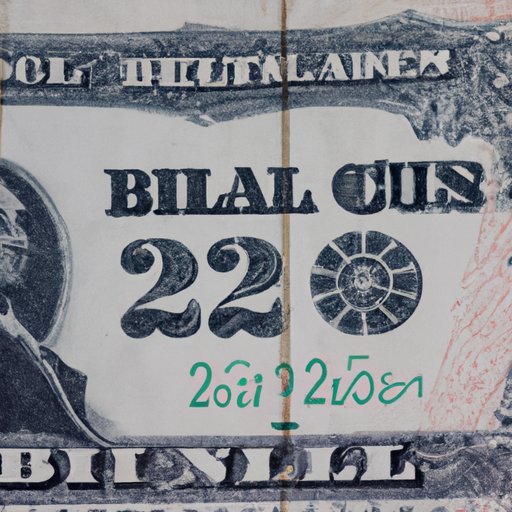
Introduction
Have you ever come across a $2 bill and wondered if it was worth anything? Perhaps you’ve heard rumors that they are rare and valuable, or maybe you assume they’re just a novelty item. In this article, we’ll explore the history of $2 bills, their rarity, and why some collectors are willing to pay more than face value for them. We’ll also discuss how to spot rare bills, the world of 2 dollar bill collecting, and whether they’re worth investing in.
History of 2 Dollar Bills
The $2 bill has an interesting history. It was first introduced to the United States in 1862 as part of an effort to address a nationwide shortage of coins and currency. At the time, $2 was a significant amount of money, and the bills featured a portrait of Alexander Hamilton, who was the first Secretary of the Treasury and instrumental in establishing the nation’s financial system.
Over the years, the design of the $2 bill has changed several times, and several notable figures have been featured on the bill, including Thomas Jefferson and John Trumbull. In recent years, the bill has featured a scene from the signing of the Declaration of Independence on the back.
Despite rumors to the contrary, $2 bills are still being printed today. While they are not as common as other denominations, they are an official and legal form of currency in the United States.
Rarity of 2 Dollar Bills
While $2 bills may not be as common as other denominations, they are not necessarily rare. However, their scarcity does make them a sought-after item for collectors.
Some $2 bills are more valuable than others due to their rarity. For example, bills from the series of 1899, 1917, and 1928 are all considered more valuable than later series due to their age and limited availability. Bills with low serial numbers or special markings are also sought after.
In recent years, several $2 bills have sold for well above their face value at auction houses and online marketplaces. For example, in 2019, a rare 1890s-era $2 bill sold for $8,000 at an auction.
How to Spot Rare 2 Dollar Bills
So, how can you tell if a $2 bill is rare or valuable? There are a few tips to keep in mind. First, bills from older series are generally more valuable than more recent ones. Look at the year the bill was printed and research the rarity of that series.
Second, bills with low serial numbers or special markings, such as star notes, can also be more valuable. A star note is a replacement bill with a star symbol in the serial number, indicating that it was printed to replace a damaged or flawed bill.
Finally, be aware of potential counterfeit bills. Consult a reputable currency dealer or appraiser if you suspect a bill is fake.
2 Dollar Bill Collecting
For many people, collecting $2 bills is a hobby. Enthusiasts enjoy finding rare bills, building a collection, and learning about the history of currency. Some collectors focus on bills from particular series, while others collect bills with certain markings or serial numbers.
Starting a collection is relatively easy. Simply obtain a few $2 bills from a bank or currency dealer and begin researching the history of the bills. Joining a collectors group or attending a currency show can also provide valuable information and resources for collectors.
While $2 bills may not necessarily be a sound financial investment, collecting them can be a rewarding pastime. It’s important to properly store and care for the bills to maintain their condition and value over time.
Investing in 2 Dollar Bills
While collecting $2 bills can be enjoyable, investing in them is not necessarily a sure bet. While some bills may appreciate in value over time, others may not, and the market for currency changes constantly.
It’s also important to properly store and care for the bills to maintain their condition and value. Some collectors recommend storing bills in acid-free sleeves or albums to prevent damage from light, dust, or moisture.
Are 2 Dollar Bills Common or Rare?
Debate exists among currency collectors and dealers on whether $2 bills are considered rare or not.
From a technical standpoint, $2 bills are not considered rare. While they may not be as common as other denominations, they are still being printed today and are an official form of currency.
However, from a collector’s standpoint, certain $2 bills can be considered rare due to their age, series, or markings. Collectors may be willing to pay more than face value for these bills, even if they are not necessarily rare in the strictest sense of the word.
Conclusion
In conclusion, $2 bills can be an intriguing and potentially valuable addition to a currency collection. While they may not necessarily be rare from a technical standpoint, some bills can be more valuable than others due to their scarcity, age, or markings. Collecting $2 bills can be an enjoyable pastime, and properly storing and caring for them can help maintain their condition and value over time.
If you’re interested in exploring the world of 2 dollar bill collecting further, there are many resources available online or from currency dealers and collectors groups.




